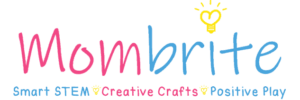Learn how to make a realistic yet easy DIY 3D solar system model with simple craft materials. Your kids will love using a unique painting technique to make each planet.
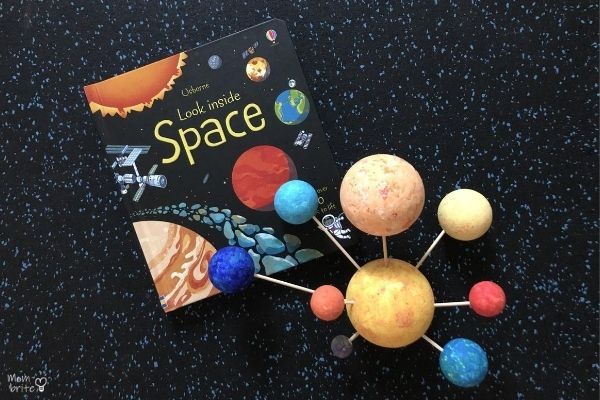
Making a 3D solar system model seems like a daunting task. But it’s hard to picture the sun with all the planets unless you have a 3D model.
Below you will find an easy way to make a DIY 3D solar system model for preschoolers and elementary school kids. We used our favorite space book, Look Inside Space to decide what each planet would look like in our model.
How to Make 3D Solar System Model
Materials:
- Different size styrofoam balls
- Acrylic paint
- Baking pan or tray
- Paper
- Tape
- Optional: skewer sticks
Instructions:
1. Determine the styrofoam ball you will use for each planet and sun.
2. Place a piece of paper in the baking pan or tray. Tape the paper down so it doesn’t move around when you move the baking pan or tray.
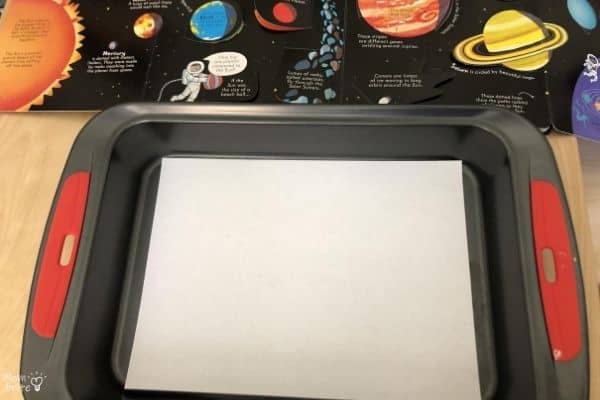
3. Pick a planet. Determine what colors you will use for the planet or sun.
4. Squeeze the acrylic paints on paper.
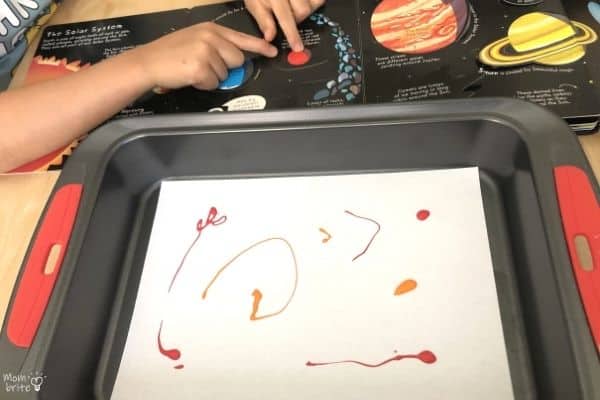
5. Place the styrofoam ball on the paper and roll it around by tilting the baking pan or tray.
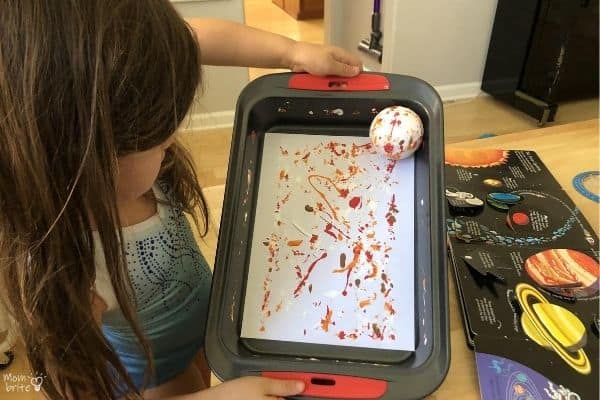
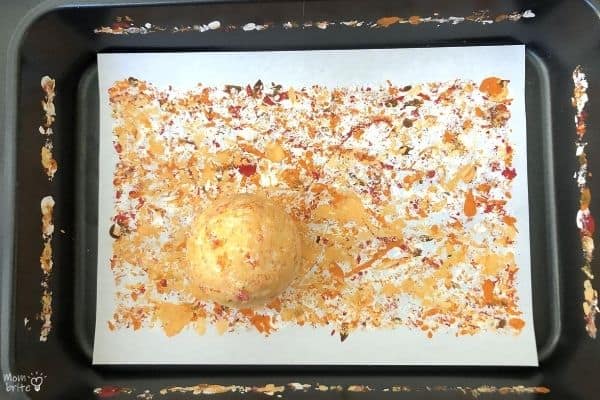
6. Continue until the entire ball is covered. You may need to use a paintbrush to push the smaller styrofoam balls around.
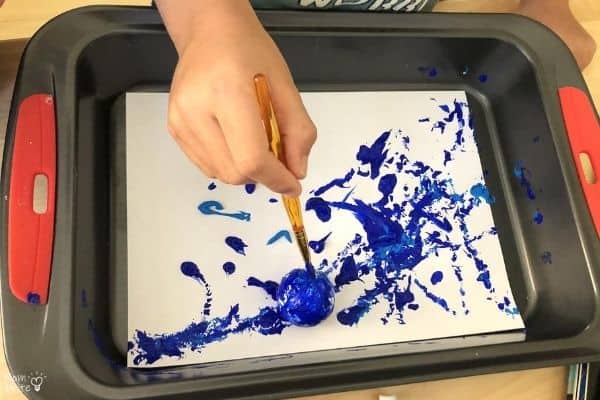
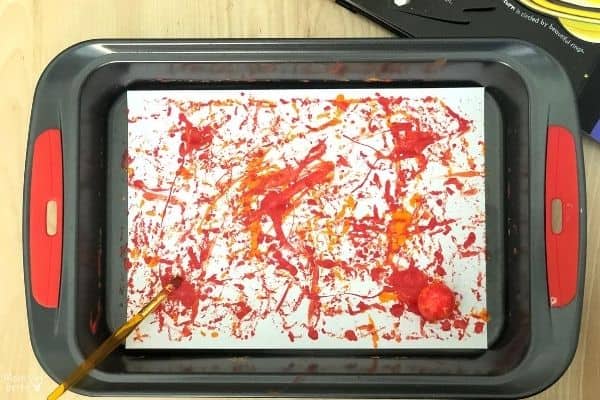
7. Repeat steps #3-#6 for all the planets and sun.
8. Allow all the styrofoam balls to dry before playing with them.
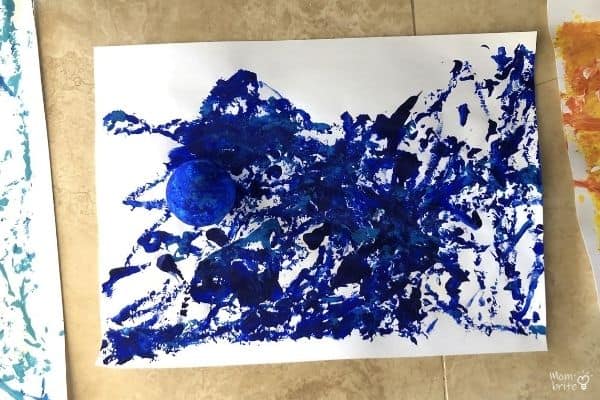
9. Optional: Cut the skewer sticks in different lengths to represent the distance between the Sun and the planets. Carefully insert the sticks into the styrofoam balls. All the sticks should have a planet on one end and the Sun on the other.
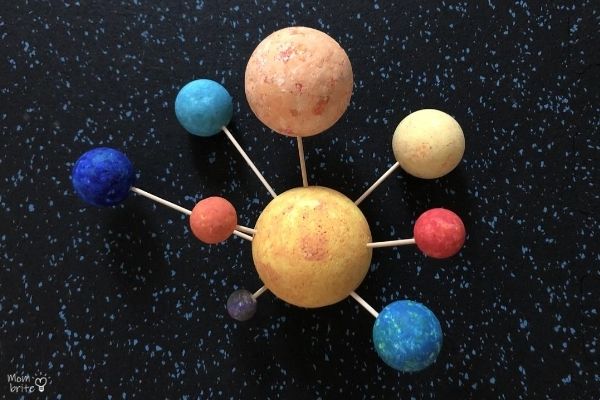
Not complicated, right? Since I have a preschooler and first-grader, I wasn’t about to ask them to make a 3D solar system by drawing all the details on each planet. By painting with a baking pan, we got the general idea of each planet and you can definitely identify which one is which by looking at them.
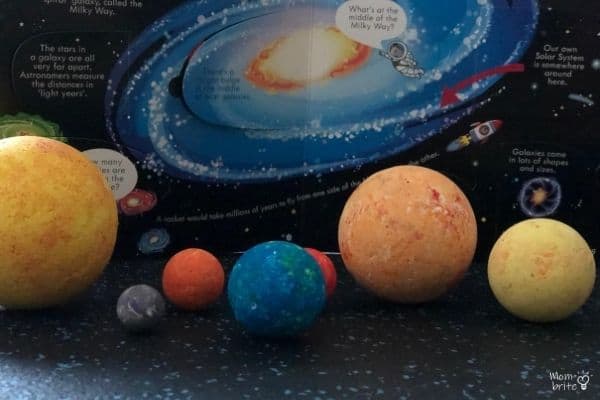
For each planet, my kids and I scrutinized Look Inside Space to determine which size styrofoam ball and what colors we should use. I believe this in-depth analysis of the surface of each planet allowed my kids to remember which planet is what much better than simply memorizing the names in a textbook.
I do have to point out that we did not make a ring for Saturn. There was no easy way to fashion a ring that we could slip on the planet and keep it in place for the model. If you want to give it a go, you can try tying a couple of rubber bands around the styrofoam ball before rolling it around in the paint. This idea occurred to me after we already finished the model so it was too late for us.
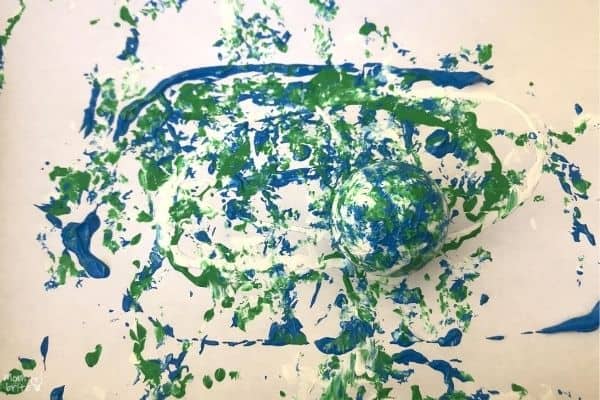
My kids loved making Earth. Because of the blue, green, and white color combination, they thought Earth was the prettiest planet. They also said that they loved Earth and would want to treat it well. How sweet!
While we were making the 3D solar system, we played The Planets by Holst. We discussed why Mars, the Bringer of War sounded angry and almost like the Star Wars soundtrack. Our favorite was Jupiter, the Bringer of Jollity because the song was lively and happy. The songs allowed us to memorize the planets not only visually, but also aurally and emotionally.
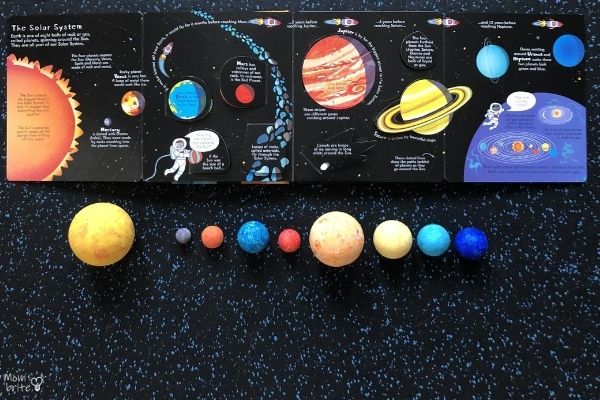
Before we stuck the planets with the skewer sticks, my kids spent a lot of time playing with the planets. My first-grader placed the planets in order by matching the planets with the ones in Look Inside Space. Then he closed the book and tried to do it all by himself. He was able to do it after a couple of tries!
Color Combinations for Each Planet
I highly recommend that you and your kids discuss the colors for each planet together. In case you are stuck and can’t decide which colors to use, this is what we came up with:
MERCURY: Grey, Purple, White
VENUS: Red, Yellow, White
EARTH: Light blue, white, green
MARS: Red, orange
JUPITER: Red, yellow, orange, white
SATURN: Yellow, white, brown
URANUS: Aqua, light blue
NEPTUNE: Light blue, dark blue
Note that while some of the planets have similar colors, the colors in each planet has a different ratio. For example, we used a lot more red on Mars than Venus, and a lot more yellow on Saturn than Jupiter.
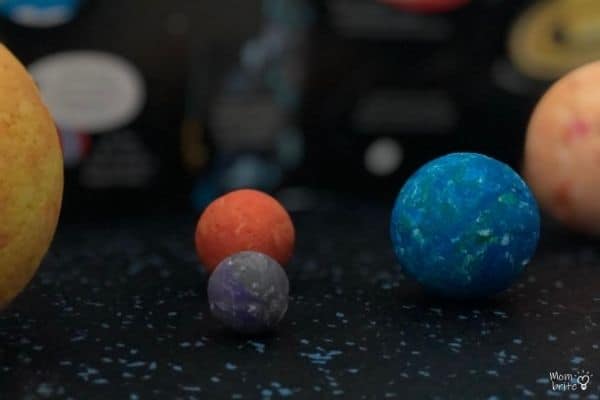
Conclusion
The 3D solar system model is now part of our homeschool room, and we are so proud of it. My kids loved that they both had a hand in designing it and making it. We discovered this fun way of painting when we made a colorful heart for Valentine’s Day.
I hope you are able to make this 3D solar system with your kids. It was so much fun learning about the different colors that make up the planets. Doing it alongside a book about space also allowed us to learn about each planet as we painted the styrofoam balls.
For more out of this world craft, check out:
